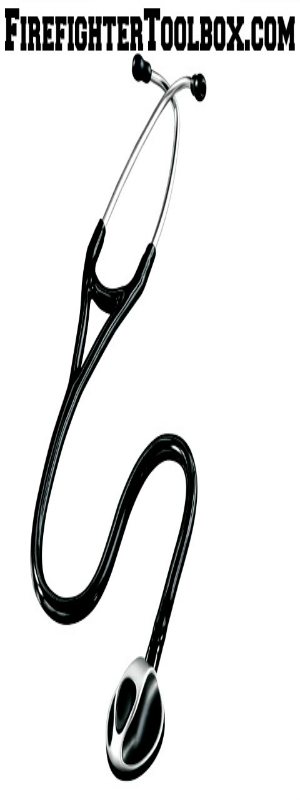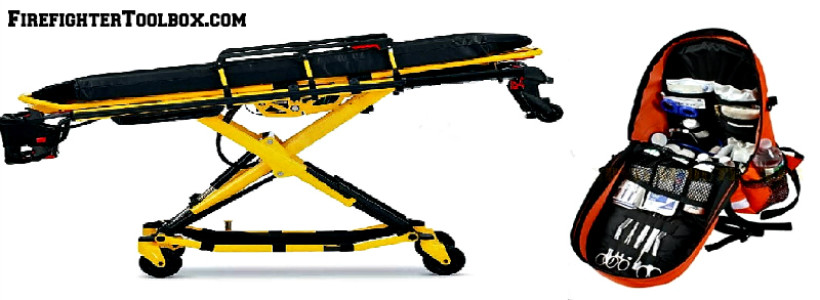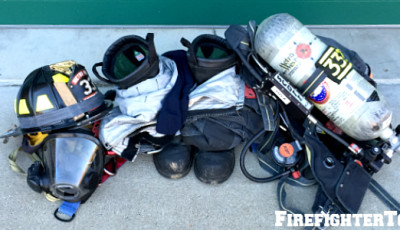3 Rule Outs of the Medical Patient
When we get dispatched to a medical call, we should use 3 rule outs to prevent us from getting tunnel vision and to assist in finding the underlying medical problem. Think of three medical problems that the patient complaint may be caused by and use those rule outs to help get a field impression of the patient.
#1 – Respiratory Rule Outs
We are dispatched to a 64-year-old male patient complaining of shortness of breath. While en route to the call think of three things it could be.
Let’s pick the rule outs:
- Chronic Obstructive Pulmonary Disease (COPD)
- Congestive Heart Failure (CHF)
- Pneumonia.
His lung sounds consist of rales so we are not thinking pneumonia or COPD. His blood pressure is hypertensive so this makes us look to treat CHF.
Let’s say the patient has rhonchi with warm skin temperature, we should consider pneumonia. If the patient has wheezes and tachycardia we should consider COPD or Asthma.
What if on the physical exam we find hives on the torso? Think allergic reaction instead of COPD or asthma.
We should pick three rule outs that match up with our dispatch information. An example of this would be not using COPD as a rule out for a 5-year-old patient.
#2 – Cardiac Rule Outs
What rule outs could we use for chest pain? We could use the rule outs of cardiac chest pain, musculoskeletal chest pain, or pulmonary embolism. If the patient has increased pain with movement or when we push on it, known as point tenderness, it is most likely musculoskeletal. Match his story with his complaint as in recent trauma or maybe he was carrying something heavy. Utilize your medical questioning to solidify your field impression.
#3 – Altered Mental Status Rule Outs

The altered mental patient always has us playing detective. Using 3 rule outs here will be defined by my dispatch information.
An example of this is a 22-year-old male at the bar would have the rule outs of overdose, diabetes, and epilepsy. A 72-year-old male in his house would have the rule outs of insulin, epilepsy, and infection.
We should use the acronym AEIOU-TIPS here to find what the problem could be.
- Alcohol is the last resort diagnosis because it can burn the first responder every time. If we think the patient is only drunk and do not assess for other medical problems, we would be doing the patient a disservice.
- Epilepsy is found by witnesses, medical history, and medications.
- Insulin is actually blood sugar and we can check that with a blood glucose monitor.
- Overdose is checked by medications, pupils, and witnesses.
- Uremia is a buildup of uric acid in the blood and could be caused by dialysis patients missing a treatment.
- Trauma is found by performing a head to toe assessment and by utilizing witnesses who could tell us what happened.
- Infection is the second “I” and can be found in our ABC’s by checking the skin color temperature and moisture. The temperature could be confirmed by using a thermometer to get an actual temperature reading.
- Psychosis can be confirmed by medications and past medical history.
- Stroke is the last letter and can be found by performing a neurological assessment like the Cincinnati Stroke Scale.
#4 – Abdominal Pain Rule Outs
All female patients of childbearing age should have abdominal pain treated as ectopic pregnancy and considered pregnant until proven otherwise. This will help us transport to proper facility acting as a patient advocate.
Other rule outs could be bowel obstruction and abdominal aortic aneurysm (AAA). Our medical questioning will do a lot to help us try to figure out what the problem could be.
For a bowel obstruction ask when was the last bowel movement? This problem is consistent with patients on pain medication. Patients with an AAA may present with a pulsatile mass located just above the umbilicus.
Rule outs take practice, but they will keep us on track to find the medical problem and help us figure out the proper treatments needed to help improve our patient’s status. The more we know about disease processes and presentations, the better our ability to utilize the rule outs.
Remember to always follow your medical guidelines when providing patient care. Until next time, stay safe and keep learning.
Photo Courtesy Joe DeVito








